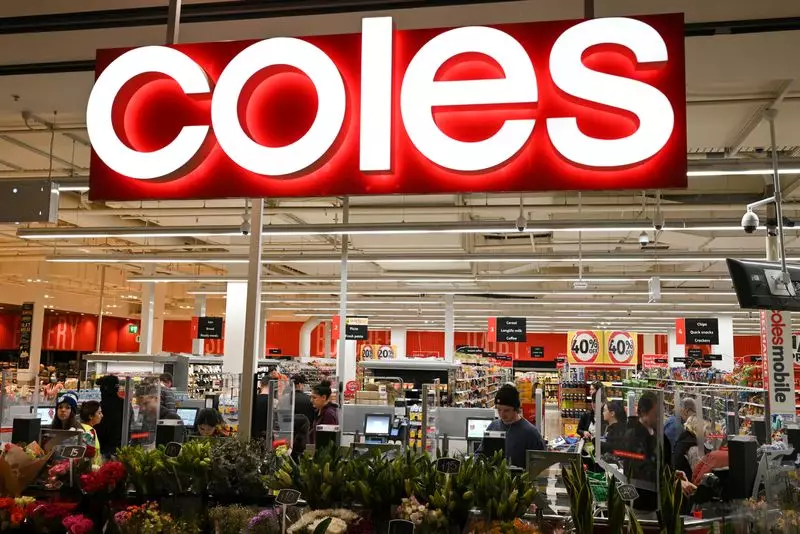In a recent financial disclosure, Coles, one of Australia’s leading supermarket chains, reported a notable decrease in comparable sales for the first quarter of fiscal 2024. This dip can be largely attributed to the company’s strategic decision to lower shelf prices across its product range, a move necessitated by ongoing pressures from consumer expectations amid a rising cost of living crisis. Despite a 2.4% increase in sales compared to the previous year, down from 3.6%, Coles managed to surpass market expectations with a 2.9% jump in overall sales revenue, reaching A$10.55 billion ($6.94 billion). This reflects a complex interplay between pricing strategy and market demand, underscoring the challenges faced by major retailers in a competitive landscape.
The Australian grocery market is heavily polarized, with Coles and its larger competitor, Woolworths, vying for position amidst increasing scrutiny from consumers and stakeholders. Both companies have been urged to adopt more aggressive pricing strategies to alleviate the financial burden faced by consumers, particularly in light of inflationary pressures. The pressure is palpable, as customers are evolving, becoming more discerning about where they shop and how much they pay. Retail analysts have noted that Coles’ sales growth, despite the decrease in comparable sales, is a testament to its ability to innovate and adapt, perhaps offering promotional discounts and enhanced value propositions to attract customers.
Leah Weckert, CEO of Coles Group, acknowledged the ongoing difficulties many customers experience due to rising living costs, emphasizing the company’s commitment to delivering value through various promotional efforts such as weekly specials, loyalty programs, and exclusive store brands. These initiatives are not just a response to immediate pressures, but also part of a broader strategy to build customer loyalty and trust in a time of uncertainty. The positive uptick in e-commerce revenue further indicates that Coles is actively finding ways to appeal to a digital-savvy consumer base, adapting its offerings to suit emerging shopping trends.
In an optimistic turn, Coles announced its plans to construct its third automated distribution center in Truganina, signaling confidence in its operational model and future growth prospects. This ambitious move is anticipated to yield significant cost savings, estimated to reach A$105 million this year alone. Financial analysts have noted that this investment forms part of Coles’ broader capital expenditure strategy, projected to be A$1.3 billion for the 2025 fiscal year. Such investments are crucial for maintaining competitive edges in an industry that is rapidly evolving in terms of technology and consumer expectations.
As Coles continues to navigate the complexities of the retail environment amid financial scrutiny and changing market dynamics, its ability to adapt will be closely monitored. The juxtaposition of a sales growth narrative alongside pressures from decreasing comparable sales reflects the multifaceted challenges facing the grocery sector. With the Australian economy still adjusting to post-pandemic realities, Coles’ future performance will hinge on its strategic choices and responsiveness to consumer needs. The coming quarters will be critical in determining how effectively the supermarket can balance price reductions with profitability, all while remaining a trusted retailer in the eyes of its customers.

